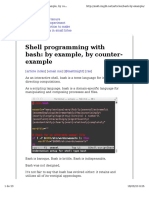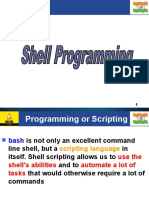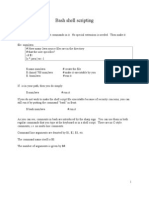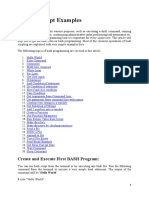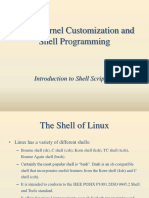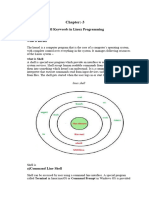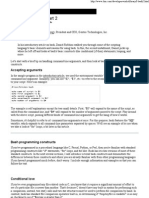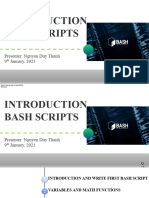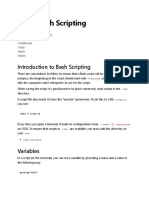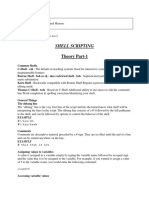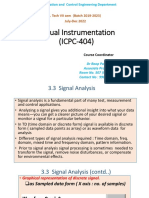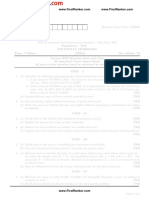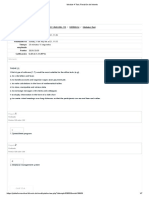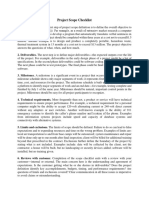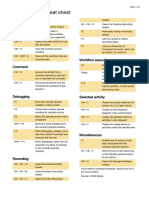0% found this document useful (0 votes)
4 views12 pagesLab 7 - Bash Scripting
This document outlines Lab 7 for the Bash Scripting course at Zewail City of Science and Technology, focusing on writing and executing Bash scripts. It covers key concepts such as invoking scripts, using variables, handling user input, and implementing control structures like if statements and loops. Additionally, it includes a requirement for students to create a function that checks if a string is a palindrome, emphasizing string operations and user input handling.
Uploaded by
hassan63ahmed12Copyright
© © All Rights Reserved
We take content rights seriously. If you suspect this is your content, claim it here.
Available Formats
Download as PDF, TXT or read online on Scribd
0% found this document useful (0 votes)
4 views12 pagesLab 7 - Bash Scripting
This document outlines Lab 7 for the Bash Scripting course at Zewail City of Science and Technology, focusing on writing and executing Bash scripts. It covers key concepts such as invoking scripts, using variables, handling user input, and implementing control structures like if statements and loops. Additionally, it includes a requirement for students to create a function that checks if a string is a palindrome, emphasizing string operations and user input handling.
Uploaded by
hassan63ahmed12Copyright
© © All Rights Reserved
We take content rights seriously. If you suspect this is your content, claim it here.
Available Formats
Download as PDF, TXT or read online on Scribd
/ 12











